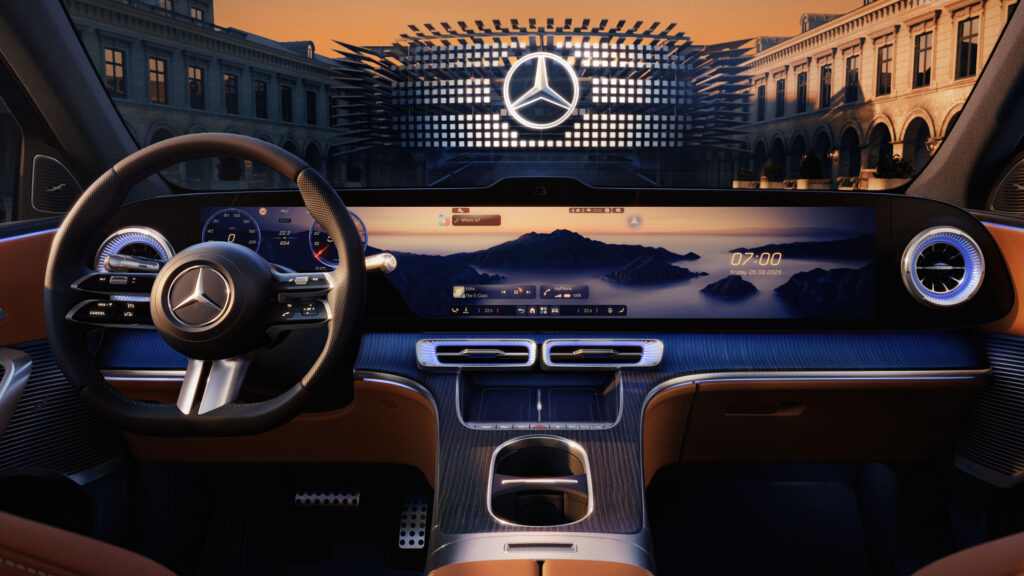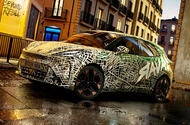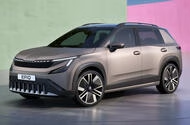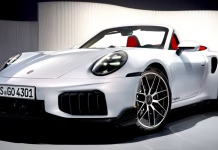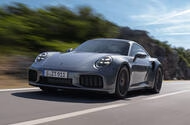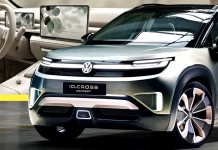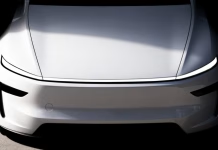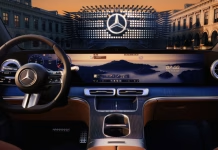Skoda Epiq Unveiled as Affordable Electric SUV With Surprising Range and Practicality
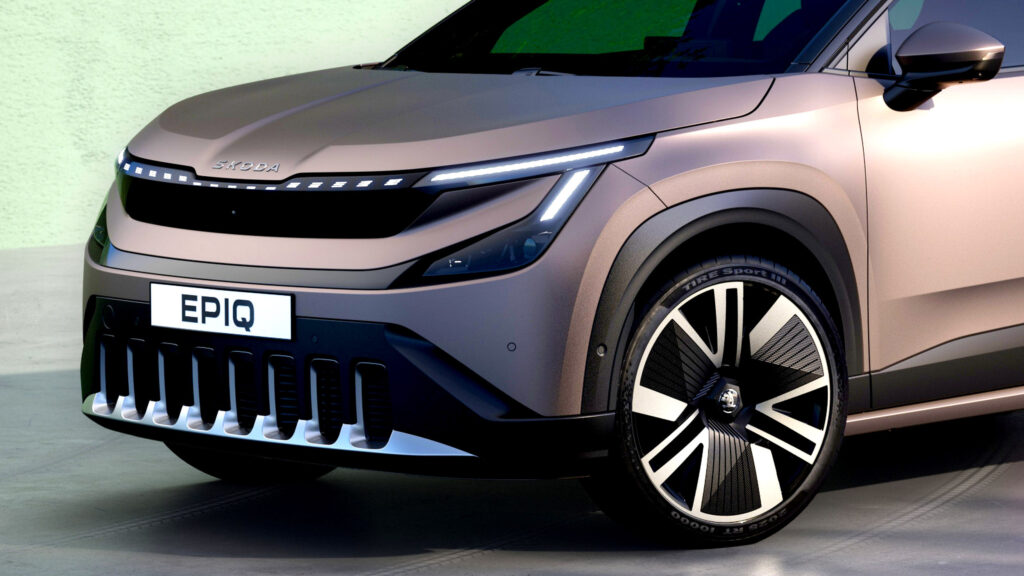
Cupra Raval Unveiled as Affordable Electric Hot Hatch with 223bhp and Bold Barcelona Design
 New electric supermini, set to be the Spanish brand's smallest and most affordable model, will arrive next year
New electric supermini, set to be the Spanish brand's smallest and most affordable model, will arrive next year
The Cupra Raval supermini, shown for the first time at the Munich motor show, will arrive next year with a range-topping 223bhp VZ performance version.
The new car will be the Barcelona brand's smallest model when it goes on sale net year, and shared the same MEB entry architecture as the forthcoming Volkswagen ID Polo, Volkswagen ID Cross and Skoda Epiq. All four models will be produced at Cupra plants in Spain.
Munich motor show 2025: all the key cars
The production Raval was shown in Munich sporting a camouflage wrap based around a street pattern of the Barcelona district its gets its name from, but it's evident that several key cues from the previous UrbanRebel concept car remain intact.
These include its large triangular headlights and sharp-edged rear end with a wraparound light bar, although the front grille has been simplified.
The electric hatchback will become Cupra’s smallest and most affordable model when it arrives next year, with prices expected to start around £25,000.
Full technical specifications have yet to be confirmed, but the machine will be 4046mm long with a wheelbase of 2600mm. Cupra has also confirmed that to meet the brand's performance brief the Raval's suspension will be 15mm lower than other VW Group models using the MEB Entry platform, while it will also feature bespoke suspension tuning and steering.
The top-spec Raval VZ will be tuned to offer 223bhp from its front-mounted electric motor, matching the forthcoming ID Polo GTI. The Raval VZ will also feature sport suspenion, an ESC off mode, an electronic slip differential and 19in wheels with wider 235mm tyres.
Cupra previously suggested that UrbanRebel concept would dispatch the 0-62mph sprint in 6.9sec, positioning it just behind the 217bhp Alpine A290 in performance terms.
Cupra added that the concept would have a range of 273 miles (in long-range guise), which would put it on a par with the ID Polo.
The Raval borrows its name from the El Raval district of Barcelona, and it will be built in the nearby city of Martorell.
Inside the High-Stakes World of Police Pursuits: Officers Weigh Justice Against Danger

Skoda Epiq Unveiled as Affordable Electric SUV with Big Space and 264 Mile Range...
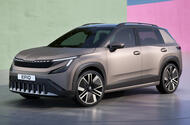 Kamiq pricing for Skoda's Fabia-sized electric SUV, which packs a big boot and a 264-mile range
Kamiq pricing for Skoda's Fabia-sized electric SUV, which packs a big boot and a 264-mile range
Skoda's new baby electric SUV, the Epiq, is edging closer to a 2026 launch with the unveiling of a near-production show car at the Munich motor show.
Giving a "concrete glimpse" of Skoda's answer to the Renault 4, the Epiq concept was revealed alongside the Volkswagen T-Cross and Cupra Raval with which it will share a platform, powertrain and production line.
Skoda revealed the first Epiq concept last year, but this heavily evolved second iteration is expected to arrive in showrooms mostly unchanged.
At 4.1m long, the Epiq will be the smallest of Skoda's electric SUVs – sitting underneath the 4.4m Elroq – and effectively the electric equivalent to the Fabia. But it is said to still seat five "comfortably", have a 475-litre boot and offer a range of 264 miles.
Based on the same MEB Entry architecture as the other small VW Group EVs – also including the new ID Polo – the Epiq will have a 208bhp motor on the front axle as standard. A hot vRS version, twinned with the ID Polo GTI, is possible and could ramp that up to 223bhp.
It is described as the first car designed completely according to Skoda's minimalist new Modern Solid design principles - first deployed on the updated Elroq and Enyaq – both inside and out.
To that end, it wears Skoda's new 'Tech Deck' face, T-shaped light signatures, chunky bumpers and a distinctive new shade of 'Cashmere' paint, which contrasts with the grey lower bodywork. The cabin is visually separated from the rest of the car by an accentuated shoulder that Skoda refers to as a 'tornado line'.
The interior, in keeping with Skoda tradition, majors on practicality and everyday usability, with 'simply clever' features like bag hooks, fasteners and hidden cubbies dotted throughout. The touchscreen will be the main control interface, but physical buttons and haptic scrollers feature as part of an emphasis on intuitive utility.
Skoda says the Epiq will be priced to match its petrol-powered counterpart, the Kamiq, which starts at £25k. The firm says "this further underlines Skoda's commitment to meeting the growing demand for sustainable and accessible mobility solutions".
Klaus Zellmer, CEO of Skoda, said: “It embodies the essence of Skoda: modern solid design, a spacious interior within a compact footprint, user-friendly, intuitive digital interfaces, and simply clever details that ensure a seamless experience – and above all – at an attractive price point.
"With the Epiq, we’re taking another step towards making electric cars a practical and compelling choice for everyday drivers."
The final production version will be revealed in mid-2026, at around the time Skoda is set to add a large seven-seat electric SUV based on 2023's Vision 7S concept – serving as an EV equivalent to the Kodiaq.
2026 Porsche 911 Turbo S Unleashes Hybrid Power for Record-Breaking Speed
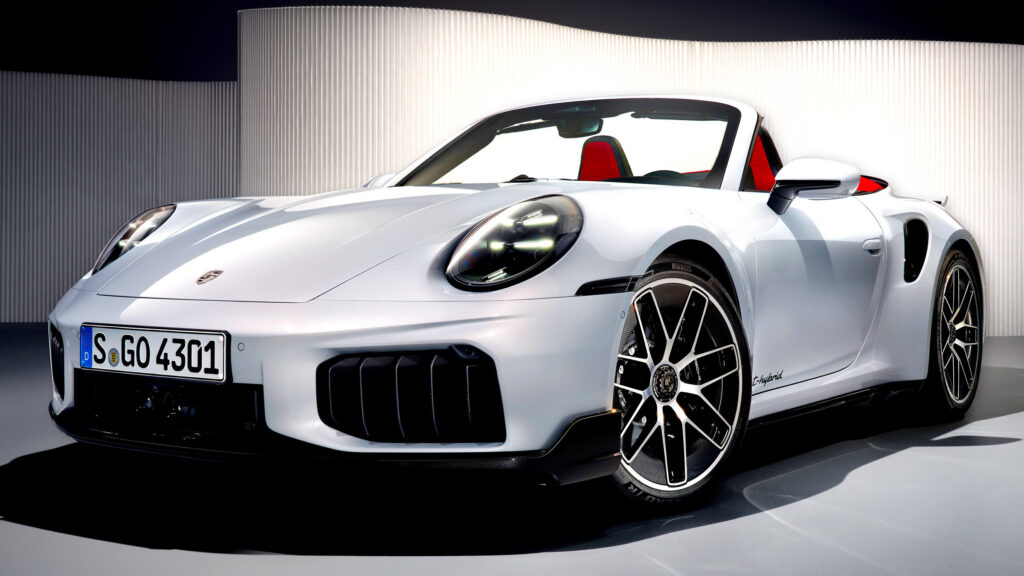
Porsche 911 Turbo S Hybrid Unleashed The Most Powerful and Advanced 911 Ever
 Landmark shift for Porsche sports car pushes it to unprecedented power
Landmark shift for Porsche sports car pushes it to unprecedented power
The new Porsche 911 Turbo S features a hybridised flat six that pumps out more power than any version of the sports car so far.
Electrifying the Turbo S is the most significant change to the model’s technical recipe since a second turbocharger and fourwheel drive were introduced in the mid-1990s. The move pushes Porsche’s flagship road car beyond the 700bhp mark, with a corresponding increase in price.
The hybrid Turbo S will start from £199,100 in coupé form, with the cabriolet costing £10,000 more. First deliveries are expected in late 2025.
A non-S derivative is so far unconfi rmed – and may never come, reflecting the fact that in modern times the maximalist S has been the stronger seller.
While this 992.2-gen model is technically a mid-life facelift for a car that has been on sale since 2020, the changes under the skin are wide-ranging. The 3.7-litre flat six of the outgoing 911 Turbo S is replaced by a version of the 3.6-litre engine found in the 911 Carrera GTS hybrid, with the same asymmetric valve timing but new pistons for a higher compression ratio. It also has an additional ‘eTurbo’, with the car’s two blowers working in parallel.
The upshot for this second electrified version of the 911 is 701bhp between 6500rpm and 7000rpm (versus 641bhp at 6750rpm for the old Turbo S) and 590lb ft of torque at 2300-6000rpm. Torque is no higher than before but its scope – what engineers refer to as the area under the curve – is vastly greater than that of the previous Turbo S, no doubt making for even more wild point-to-point performance.
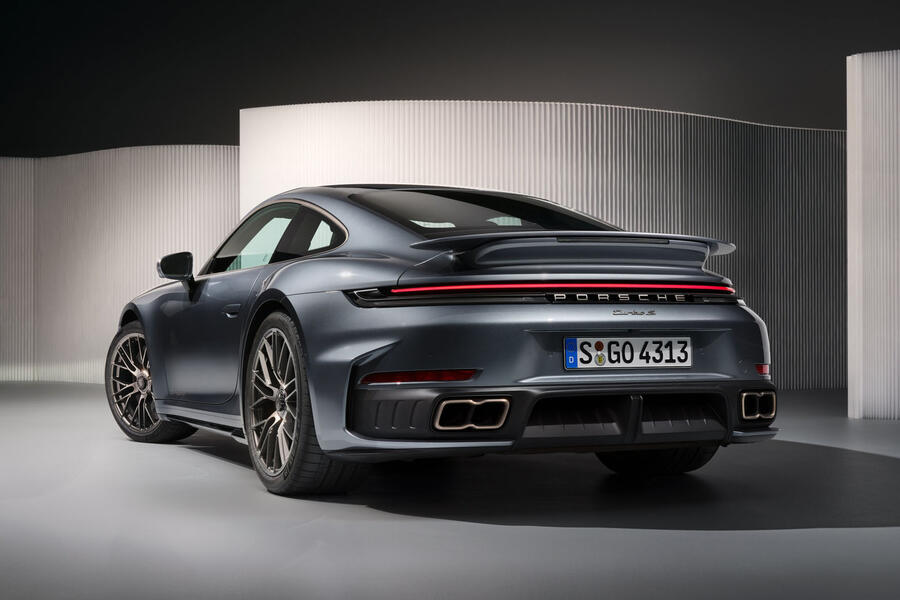
Porsche’s T-Hybrid system uses a 1.9kWh battery ahead of the scuttle to drive an electric motor connected to the shaft between the compressor and turbine wheels in each turbo. This allows the turbos to spool up extremely quickly and reach peak boost “about two seconds” sooner than otherwise, curtailing lag. It gives the new Turbo S unprecedented throttle response.
The battery also feeds an electric motor in the reinforced eight-speed PDK gearbox, further sharpening throttle response by injecting up to 139lb ft into the driveline before the flat six hits its stride.
Once the turbos are at the desired level of boost, the motor is used to regulate the speed of the shaft. In doing so, it can harvest energy, sending it back to the battery or directly to the slim e-motor in the gearbox, which can also feed the battery during deceleration. It is an entirely closed system so the 911 Turbo S isn’t a PHEV.
The claimed 0-62mph time is 2.5sec, but that closely matches Autocar’s road test time for the old model so expect what is the most potent production 911 in history to do even better. The official top speed is slightly lower than before, though, at exactly 200mph.
Elsewhere, the new Turbo S sports wider, 325mm rear tyres and larger rear brakes. Carbon-ceramic discs and rear–steer are standard. A two-tier rear spoiler-cumwing and a deployable front splitter remain, but the new car has further active aero via the gills in its front bumper.
The cross-connected active anti-roll bars are also now electrohydraulic, courtesy of the new 400V circuit, and can actuate much quicker than before.
The exhaust system is titanium, saving 6.8kg, while wiper arms made in a composite are 50% lighter. However, the total weight of the car has increased by 85kg to 1725kg – although that is with the optional rear seats in place.
Riding shotgun in the new Turbo S
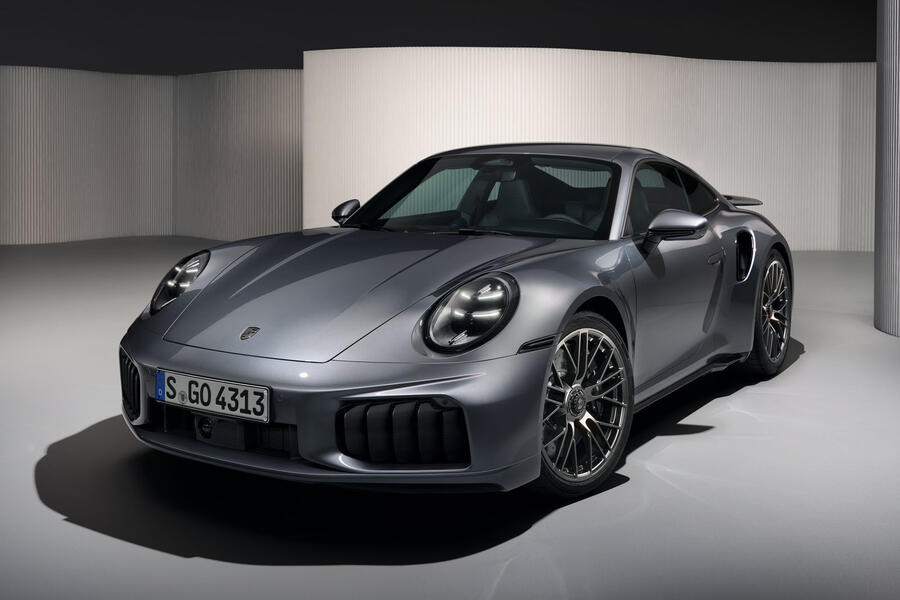
On the test track at Weissach, Germany, a pre-production Turbo S, hot from exertion, peels into the pit lane and sets itself for yet another launch control start.
This time round the driver, Jörg Bergmeister, delays his release of the brakes and for a moment, as the engine is held at 5000rpm and surplus boost pressure furiously bleeds out of the T-Hybrid powertrain, the car roars like a Boeing 747 during static takeoff. Then it seemingly disappears: poof! The new Turbo S might not sound all that romantic but it isn’t in any sense lacking in drama. Its no-holds-barred tech slant also gives it the aura of a reincarnated 959.
A few minutes later, it’s my turn in the passenger seat. I clock the new ‘Turbonite’ detailing inside the updated cabin before Bergmeister releases the bungee cord. It’s tricky to appreciate anything when you’re subjected to this level of longitudinal g but the engine note, now lightly enhanced by the rear speakers, is more serrated than before.
As the laps unfold, it’s obvious that the Turbo S’s limit handling is enhanced by the T-Hybrid system. The performance is also absurd, even on cooked Pirelli P Zero R tyres. On this technical track, even a 911 GT3 RS couldn’t keep up.
“You don’t have turbo lag any more and therefore you don’t drive it like a Turbo,” says Bergmeister while countersteering within a few feet of the Armco. “I drive it like a normally aspirated car, positioning it with the throttle and just playing with it. It’s much more satisfying than always having to anticipate the turbo lag and hoping to get it right.”
Whether all this translates to a more engaging, rewarding road car driven at sane speeds is something we’ll discover later this year, but it seems likely.
VW ID. Cross Concept Unveiled as Stylish, Affordable Electric SUV with 261-Mile Range
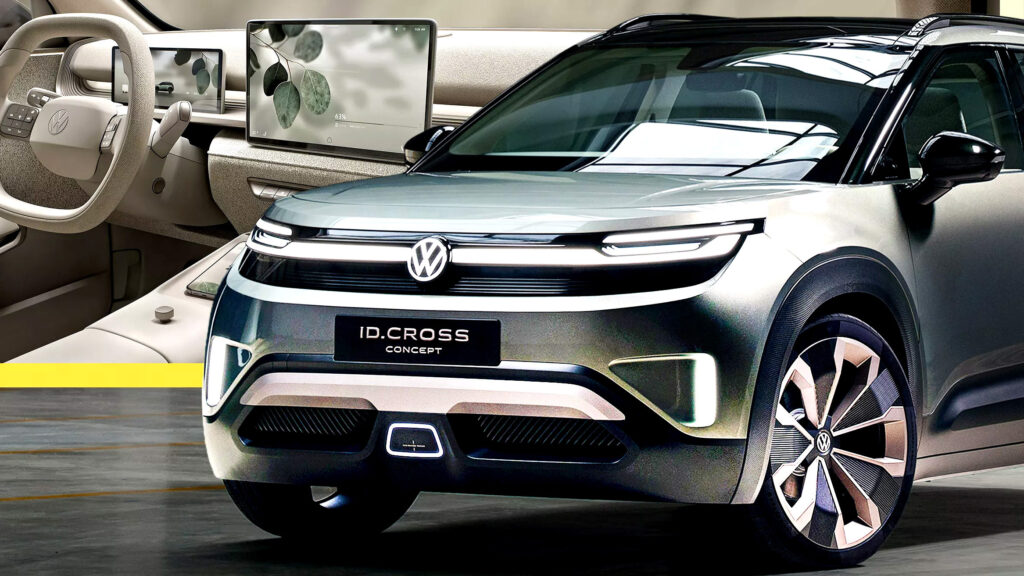
Tesla Set to Overtake Nissan as Japan’s Top EV Brand After Record Sales Surge
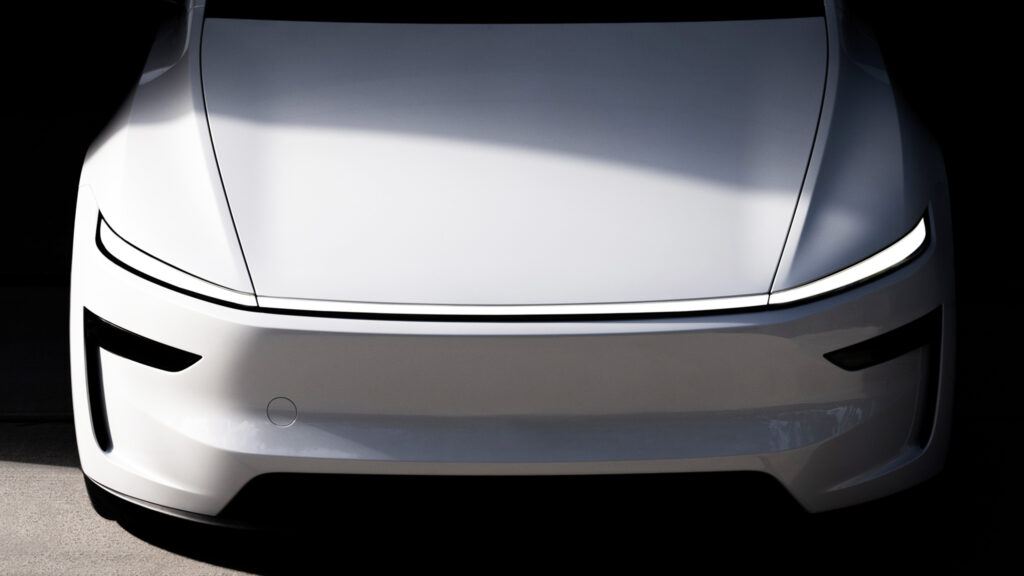
Elon Musk’s $1 Trillion Bet: Can Tesla Hit Unimaginable Heights by 2035?

Mercedes Unveils GLC Electric SUV with Stunning 39-Inch Hyperscreen and Retro-Futuristic Design
